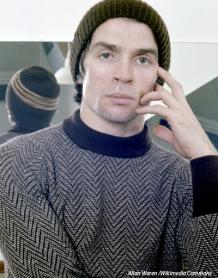Rudolf Nureyev, Star dancer

Il est né Rudolf Gamelovitch Noureev le 17 mars 1938 dans un train traversant la Sibérie, de parents tatars. Il grandit dans la ville industrielle d’Oufa (République de Bachkirie), souffrant de la pauvreté et des privations. Impressionné par un ballet vu à l'âge de 5 ans, il parvient cependant à s’inscrire dans une académie de danse de Leningrad à 17 ans. Admis en 1959 dans le corps de ballet du Kirov de Leningrad, il vient pour la première fois en Occident pour une tournée en mai 1961. Il danse le rôle du guerrier Solor, dans La Bayadère de Marius Petipa. Cette tournée est une révélation: la prestation de Noureev, tantôt félin, tantôt aérien, est un coup de foudre pour le public.
Mais Noureev est surveillé de près par le KGB du fait de son attitude critique envers le régime soviétique. Il se voit refuser la poursuite de la tournée en Grande Bretagne avec le reste de la troupe et reçoit l’ordre de rentrer immédiatement en URSS. Convaincu d’un piège, il fait six pas pour s’éloigner des agents soviétiques, six pas immortalisés comme le « saut de la liberté ». Il demande l’asile qui lui est reconnu par l’Ofpra le jour même, le 16 juin 1961.
Rudolf Noureev connaît dès lors une carrière internationale de danseur étoile. Il danse avec toutes les compagnies. Aucun style ne lui est étranger et il est l’interprète de Roland Petit au Royal Ballet, de Maurice Béjart, de Paul Taylor ainsi que de Georges Balanchine et Martha Graham. Je crois, disait-il, avoir brisé les barrières entre la danse classique et la danse moderne.
Nommé directeur de la danse à l'Opéra en 1983, Rudolf Noureev fait du Palais Garnier " sa maison ". Il marque de son empreinte toute une génération de jeunes solistes, dont il a fait des Étoiles comme Sylvie Guillem, qu’il nomme danseuse étoile en 1984. Il conduit le Ballet de l'Opéra à la gloire au cours de tournées internationales. Il laisse sept grands ballets classiques que le public acclame : La Belle au bois dormant, Le Lac des cygnes, Casse-Noisette, Don Quichotte, Raymonda, Cendrillon, et La Bayadère.
Rudolf Noureev, devenu autrichien en 1982, meurt en 1993. Il est enterré au cimetière russe de Sainte Geneviève des Bois. Il était Chevalier de la Légion d’honneur et Commandeur des Arts et des Lettres.